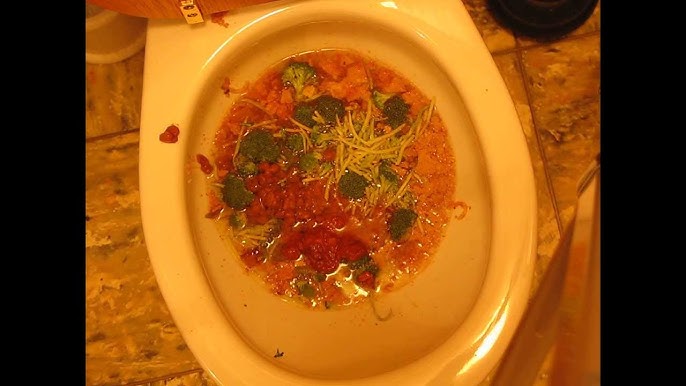Can You to Dispose of Food Down the Toilet?
Can You to Dispose of Food Down the Toilet?
Blog Article
Were you interested in facts concerning Think Twice Before Flushing Food Down Your Toilet?

Intro
Many people are commonly confronted with the predicament of what to do with food waste, particularly when it involves leftovers or scraps. One typical concern that arises is whether it's okay to flush food down the toilet. In this write-up, we'll explore the reasons why people could take into consideration flushing food, the repercussions of doing so, and different techniques for correct disposal.
Reasons that people may take into consideration purging food
Absence of awareness
Some individuals might not know the prospective injury triggered by flushing food down the bathroom. They might mistakenly think that it's a safe method.
Comfort
Flushing food down the toilet might seem like a quick and very easy option to disposing of unwanted scraps, specifically when there's no neighboring trash can available.
Idleness
Sometimes, individuals might simply pick to flush food out of sheer idleness, without taking into consideration the repercussions of their activities.
Effects of flushing food down the toilet
Environmental influence
Food waste that winds up in rivers can contribute to air pollution and harm water environments. In addition, the water made use of to purge food can stress water sources.
Plumbing issues
Purging food can lead to clogged pipelines and drains pipes, triggering costly plumbing repairs and troubles.
Kinds of food that must not be purged
Fibrous foods
Foods with coarse structures such as celery or corn husks can obtain tangled in pipelines and trigger clogs.
Starchy foods
Starchy foods like pasta and rice can absorb water and swell, bring about obstructions in pipelines.
Oils and fats
Greasy foods like bacon or food preparation oils must never ever be flushed down the bathroom as they can strengthen and create blockages.
Appropriate disposal approaches for food waste
Making use of a garbage disposal
For homes equipped with garbage disposals, food scraps can be ground up and flushed through the plumbing system. However, not all foods appropriate for disposal in this manner.
Recycling
Certain food packaging products can be recycled, decreasing waste and lessening environmental impact.
Composting
Composting is a green means to dispose of food waste. Organic products can be composted and utilized to enrich soil for horticulture.
The value of appropriate waste monitoring
Decreasing ecological injury
Proper waste monitoring methods, such as composting and recycling, help decrease pollution and maintain natural deposits for future generations.
Shielding plumbing systems
By staying clear of the technique of flushing food down the bathroom, house owners can prevent expensive pipes fixings and maintain the honesty of their plumbing systems.
Final thought
In conclusion, while it may be tempting to flush food down the commode for convenience, it's important to recognize the prospective consequences of this action. By embracing appropriate waste management techniques and taking care of food waste properly, people can contribute to much healthier pipes systems and a cleaner setting for all.
FLUSH FOOD DOWN THE TOILET?
FLUSHING FOOD CAN CAUSE BLOCKED DRAINS IN YOUR HOME
All of the plumbing fixtures in your home are connected to the same sewer pipe outside of your home. This outdoor sewer pipe is responsible for transporting all the wastewater from your home to the Council sewer mains. Even small pieces of food that go down the kitchen sink can cause problems for your sewer. It should therefore be obvious that flushing larger bits of food, such as meat, risks a clog in either the toilet itself or the sewer pipes. Flushing greasy food is even more problematic because oil coagulates when it cools, coating the interior lining of your pipes.
THE TOILET IS NOT A BIN
Food isn’t the only thing that people shouldn’t be flushing down the toilet. People use the toilet to dispose of all kinds of things such as tampons, makeup wipes, dental floss, kitty litter and even underwear. Water goes to great lengths to educate residents about the high costs and stress placed on wastewater treatment systems simply from people flushing the wrong stuff down the toilet. It costs taxpayers millions of dollars each year, and homeowners thousands in blocked drain repairs.
FLUSHING FOOD IS A WASTE OF WATER
Flushing food is a waste of our most precious resource - water. In June this year Level 1 water restrictions were introduced to protect water supply from drought conditions. Much of New South Wales continues to be affected by prolonged drought with recent figures revealing up to 97 per cent of the state remains in drought. Depending on whether you have a single or dual flush toilet, every single flush uses between five and 11 litres of water. In the current climate this is a huge amount of water to be wasting on flushing food that should be placed in the bin (or better yet, the compost).
https://www.jabplumbingsolutions.com.au/blog/can-you-flush-food-down-the-toilet

I stumbled upon that write up about Think Twice Before Flushing Food Down Your Toilet while doing a search on the internet. Appreciated our piece of writing? Please quickly share it. Let somebody else locate it. I take joy in your readership.
Visit Site Report this page